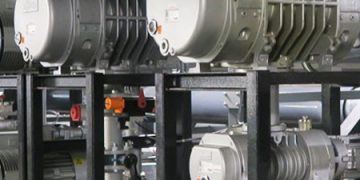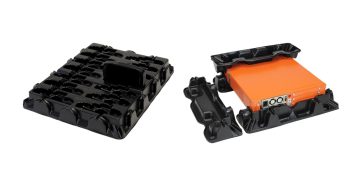Currently, the industry is experiencing a profound change. To remain competitive in the future, more and more companies are turning to advanced and IIoT-enabled technologies to increase profitability and productivity. In particular, it is important to unleash the potential of Industry 4.0 in terms of greater resilience, flexibility and performance. However, the switch to the new solutions is often not easy. The reason for this is the way industrial automation systems have been designed up to now.
Although the current standard has proven to be quite successful in the past, it is reaching its limits with the requirements of Industry 4.0. As things stand today, users often opt for the end-to-end use of a single automation device family — with training costs for personnel and spare parts inventory playing a role, for example. In many cases, however, these users are forced to accept economic disadvantages if, for example, the desired machine, which fits optimally into the production process, is not equipped with the house and yard technology. Industry 4.0 therefore often represents a compromise here. For the definition and realization of interlinked systems — regardless of the system environment — a high level of thinking, programming and testing is always required. The flexibility required for Industry 4.0 can only ever be achieved in this way at great expense, especially when the linking of the automation and IT worlds — i.e., “OT” and “IT” — comes into play. Either way, the previous standard can no longer keep up with modern demands for flexibility, time-to-market, resilience and agility.
For this reason, Norm is a promising standard for the industry of the future. Based on this standard, an automation project no longer needs to be conceived and designed with system specifics in mind. Engineering takes place quite freely and flexibly on the software side, and the centrally set-up program structures can be distributed to the corresponding controllers completely independently of the underlying hardware. Even in the case of subsequent retrofits and conversions, the mechatronic components can be replaced, removed or added using the plug-and-play principle. This standard thus enables the full potential of Industrie 4.0 to be unleashed.
What is IEC 61499?
In a nutshell, standard IEC 61499 defines a generic model for distributed information and control systems. The following points explain how it can optimize the setup and management of modern, event-driven automation systems in the process:
1. hardware independence: by taking a hardware-independent application model approach, IEC 61499 enables portability of application code across platforms and engineering tools from different vendors. Automation applications developed to run on a particular vendor’s system will also run on another vendor’s system. Applications can even be freely distributed across different devices, such as controllers, intelligent drives, IPC’s, field devices and actuators.
The fundamental hardware independence simplifies and shortens engineering considerably and enables the establishment of a plug-and-produce principle in automation. The existing program structures can be easily loaded onto new devices and, in the event of conversion measures, they can be adapted without complication — a quantum leap in terms of flexibility and time-to-market.
2. prefabricated function blocks: Function blocks play a central role in the engineering of automation designs in accordance with the standard for contemporary automation: the user connects them graphically with each other and can also make use of standardized manufacturer-independent block libraries so as not to have to reinvent the wheel again and again. The use of such function blocks simplifies engineering immensely, since the interfaces and thus the method of communication between the individual mechatronic components result from the relationship of the virtually modeled blocks. If the function blocks are then distributed to the various target platforms, the communication between the components can be generated automatically. Another advantage is that the virtual function blocks can be safely tested and simulated within the software environment.

















